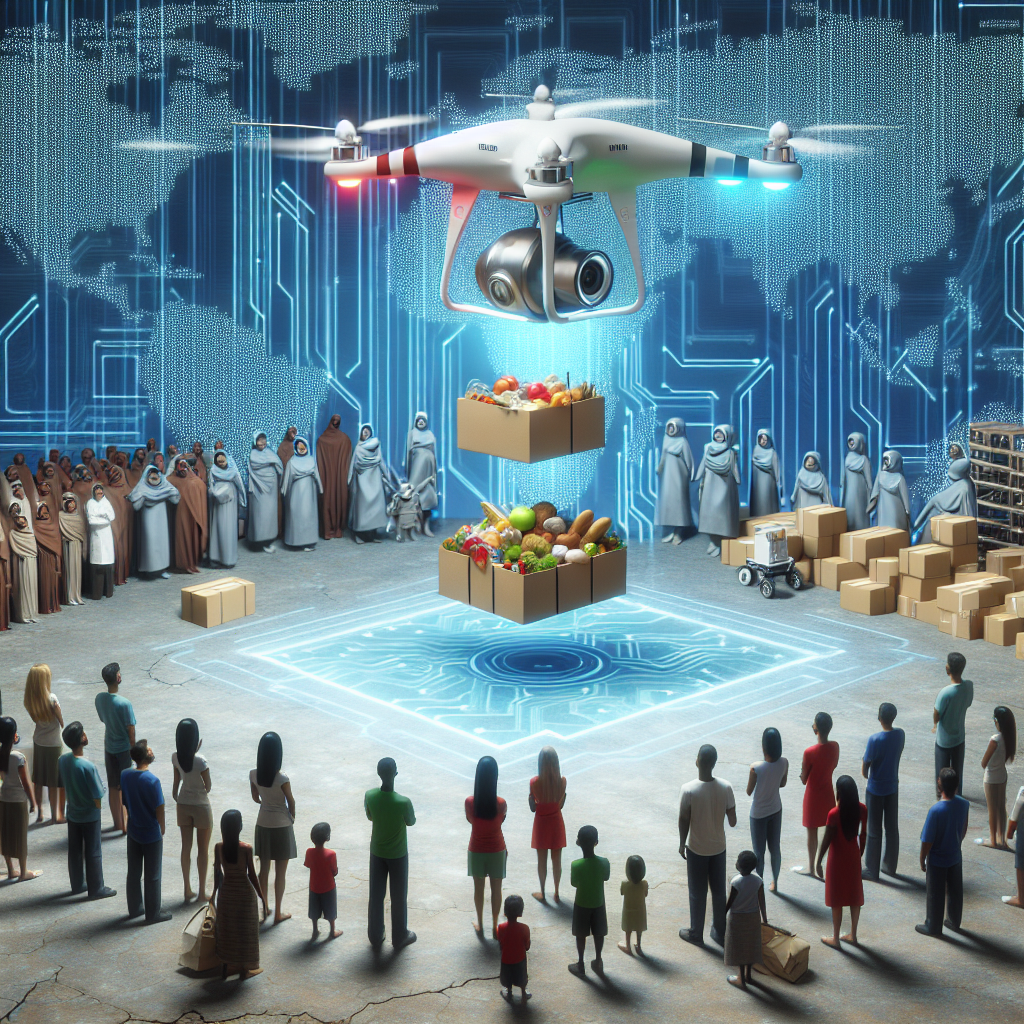Artificial Intelligence (AI) has the potential to revolutionize humanitarian aid by enabling more efficient and effective relief distribution. However, with this potential comes a number of risks that must be carefully considered and mitigated. In this article, we will explore the impacts of AI on relief distribution in humanitarian aid, as well as the potential risks that must be addressed.
Impact of AI on Relief Distribution
AI has the potential to significantly improve the speed and accuracy of relief distribution in humanitarian aid efforts. By analyzing large amounts of data, AI algorithms can help aid organizations identify areas of need more quickly and effectively. This can help ensure that resources are distributed to those who need them most in a timely manner.
AI can also help aid organizations optimize their distribution networks, making it easier to reach remote or hard-to-access areas. By using AI algorithms to analyze transportation routes and logistics data, organizations can identify the most efficient ways to deliver aid to those in need.
Furthermore, AI can help aid organizations better understand the needs of the communities they are serving. By analyzing social media data, satellite imagery, and other sources of information, AI algorithms can help aid organizations identify trends and patterns that can inform their relief efforts.
Overall, the impact of AI on relief distribution in humanitarian aid can be significant, helping organizations deliver aid more quickly, efficiently, and effectively to those in need.
Risks of AI in Humanitarian Aid
While the potential benefits of AI in humanitarian aid are clear, there are also a number of risks that must be carefully considered and addressed. Some of the key risks of AI in humanitarian aid include:
1. Bias and Discrimination: AI algorithms can be biased if they are trained on data that is not representative of the population they are meant to serve. This can lead to discriminatory outcomes in relief distribution, with certain groups receiving more or less aid than they should. It is important for aid organizations to carefully consider the data used to train AI algorithms and ensure that they are unbiased and representative of the population.
2. Lack of Transparency: AI algorithms can be complex and difficult to understand, making it challenging for aid organizations to explain how decisions are made. This lack of transparency can lead to mistrust among the communities being served and hinder the effectiveness of relief efforts. Aid organizations must work to make their AI algorithms more transparent and understandable to ensure that decisions are made in a fair and equitable manner.
3. Security and Privacy Concerns: AI algorithms rely on large amounts of data to make decisions, raising concerns about security and privacy. Aid organizations must ensure that data is collected and stored securely to protect the privacy of those being served. Additionally, they must be transparent about how data is being used and ensure that it is being used ethically and responsibly.
4. Dependence on Technology: While AI can help aid organizations improve their relief distribution efforts, there is a risk of becoming too dependent on technology. In the event of a technical failure or disruption, aid organizations may struggle to deliver aid effectively. It is important for organizations to have contingency plans in place and not rely solely on AI for relief distribution.
FAQs
Q: How can aid organizations ensure that AI algorithms are unbiased and representative of the population they are serving?
A: Aid organizations can ensure that AI algorithms are unbiased by carefully selecting and curating the data used to train them. This includes ensuring that the data is diverse and representative of the population being served. Organizations can also use techniques such as bias detection and mitigation to identify and address biases in their algorithms.
Q: How can aid organizations make their AI algorithms more transparent and understandable?
A: Aid organizations can make their AI algorithms more transparent by providing explanations of how decisions are made and the factors that influence them. This can help build trust among the communities being served and ensure that decisions are made in a fair and equitable manner. Organizations can also use techniques such as interpretable machine learning to make their algorithms more understandable.
Q: What steps can aid organizations take to protect the security and privacy of data used in AI algorithms?
A: Aid organizations can protect the security and privacy of data by implementing strong data security measures, such as encryption and access controls. They can also ensure that data is collected and stored in compliance with data protection regulations and ethical guidelines. Organizations should be transparent about how data is being used and ensure that it is being used ethically and responsibly.
In conclusion, the impact of AI on relief distribution in humanitarian aid can be significant, but it is important for aid organizations to carefully consider and address the risks associated with AI. By ensuring that AI algorithms are unbiased, transparent, and secure, aid organizations can harness the power of AI to improve their relief efforts and better serve those in need.

